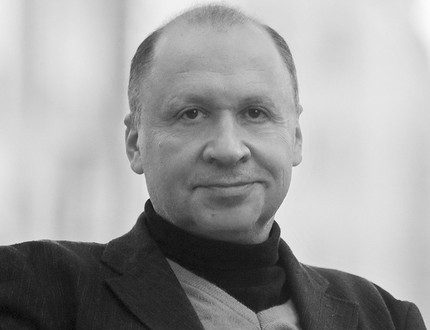
John Browning |
John Browning

A quarter of a century ago, literally dozens of enthusiastic epithets addressed to this artist could be found in the American press. One of the articles about him in The New York Times contained, for example, the following lines: “American pianist John Browning rose to unprecedented heights in his career after triumphant performances with all the best orchestras in all the leading cities of the United States and Europe. Browning is one of the brightest young stars in the galaxy of American pianism.” The strictest critics often put him in the first row of American artists. For this, it seemed, there were all formal grounds: the early start of a child prodigy (a native of Denver), a solid musical training, first obtained at the Los Angeles Higher School of Music. J. Marshall, and then in Juilliard under the guidance of the best teachers, among whom were Joseph and Rosina Levin, finally, victories in three international competitions, including one of the most difficult – Brussels (1956).
However, the too bravura, advertising tone of the press was alarming, leaving room for distrust, especially in Europe, where at that time they were not yet well acquainted with young artists from the USA. But gradually the ice of mistrust began to melt, and the audience recognized Browning as a truly significant artist. Moreover, he himself persistently expanded his performing horizons, turning not only to classical, as the Americans say, standard works, but also to modern music, finding his key to it. This was evidenced by his recordings of Prokofiev’s concertos and the fact that in 1962 one of the greatest US composers, Samuel Barber, entrusted him with the first performance of his piano concerto. And when the Cleveland Orchestra went to the USSR in the mid-60s, the venerable George Sell invited the young John Browning as a soloist.
On that visit, he played a concerto by Gershwin and Barber in Moscow and won the sympathy of the audience, although he did not “open up” to the end. But the pianist’s subsequent tours – in 1967 and 1971 – brought him undeniable success. His art appeared in a very wide repertoire spectrum, and already this versatility (which was mentioned at the beginning) convinced of his great potential. Here are two reviews, the first of which refers to 1967, and the second to 1971.
V. Delson: “John Browning is a musician of bright lyrical charm, poetic spirituality, noble taste. He knows how to play soulfully – conveying emotions and moods “from heart to heart”. He knows how to perform intimately fragile, tender things with chaste severity, to express living human feelings with great warmth and true artistry. Browning plays with concentration, in depth. He does nothing “to the public”, does not engage in empty, self-contained “phrasing”, is completely alien to ostentatious bravura. At the same time, the pianist’s fluency in all types of virtuosity is surprisingly imperceptible, and one “discovers” it only after the concert, as if retrospectively. The whole art of his performance bears the stamp of an individual beginning, although Browning’s artistic individuality in itself does not belong to the circle of extraordinary, unlimited scale, striking, but rather slowly but surely interests. However, the figurative world revealed by Browning’s strong performing talent is somewhat one-sided. The pianist does not shrink, but delicately softens the contrasts of light and shadow, sometimes even “translating” elements of drama into a lyrical plane with organic naturalness. He is a romantic, but subtle emotional emotions, with their overtones of Chekhov’s plan, are more subject to him than the dramaturgy of openly raging passions. Therefore, sculptural plasticity is more characteristic of his art than monumental architecture.
G. Tsypin: “The play of the American pianist John Browning is, first of all, an example of a mature, enduring and invariably stable professional skill. It is possible to discuss certain traits of a musician’s creative individuality, to assess the measure and degree of his artistic and poetic achievements in the art of interpretation in different ways. One thing is indisputable: the performing skill here is beyond doubt. Moreover, a skill that implies an absolutely free, organic, cleverly and thoroughly thought-out mastery of all the variety of means of piano expressiveness … They say that the ear is the soul of a musician. It is impossible not to pay tribute to the American guest – he really has a sensitive, extremely delicate, aristocratically refined inner “ear”. The sound forms he creates are always slender, elegant and tastefully outlined, constructively defined. Equally good is the artist’s colorful and picturesque palette; from the velvety, “stressless” forte to the soft iridescent play of halftones and light reflections on the piano and pianissimo. Strict and elegant in Browning and rhythmic pattern. In a word, the piano under his hands always sounds beautiful and noble… The purity and technical accuracy of Browning’s pianism cannot but arouse the most respectful feeling in a professional.”
These two assessments not only give an idea of the strengths of the pianist’s talent, but also help to understand in which direction he is developing. Having become a professional in a high sense, the artist to some extent lost his youthful freshness of feelings, but did not lose his poetry, the penetration of interpretation.
During the days of the pianist’s Moscow tours, this was especially clearly manifested in his interpretation of Chopin, Schubert, Rachmaninov, Scarlatti’s fine sound writing. Beethoven in the sonatas leaves him with a less vivid impression: there is not enough scale and dramatic intensity. The new Beethoven recordings of the artist, and in particular the Diabelli Waltz Variations, testify to the fact that he seeks to push the boundaries of his talent. But regardless of whether he succeeds or not, Browning is an artist who speaks to the listener seriously and with inspiration.
Grigoriev L., Platek Ya., 1990





